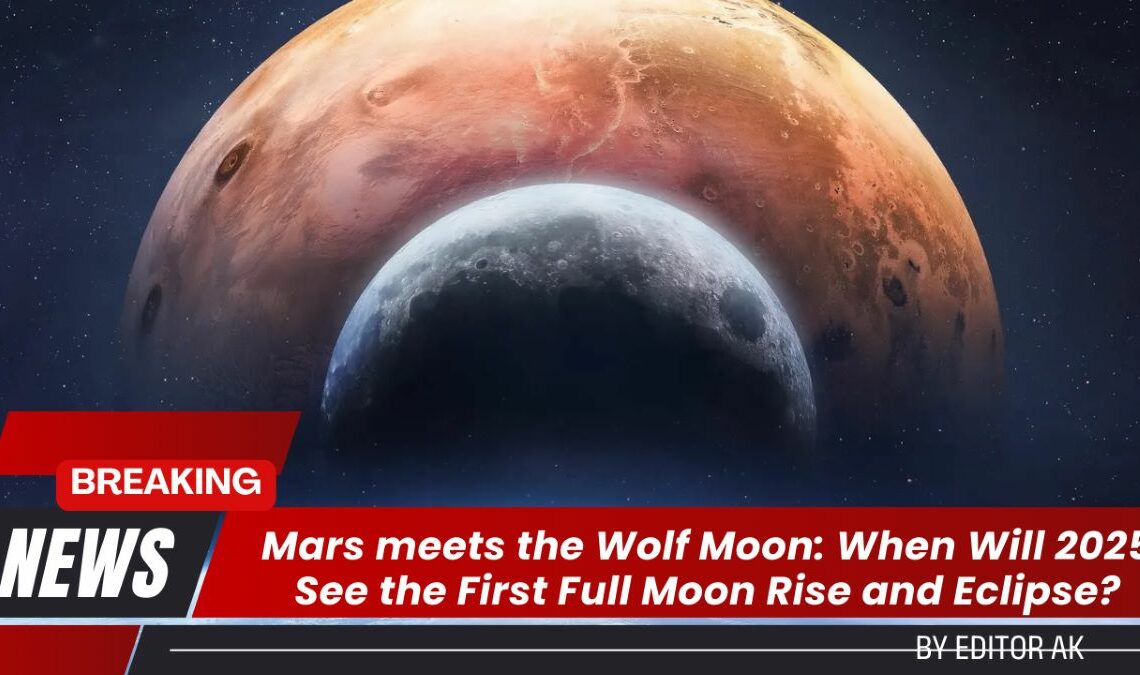The next full moon is on Monday night, which means there will be an extra surprise for those who enjoy stargazing.
According to NASA, a January full moon is known as a “Wolf Moon” because, in previous decades, packs of wolves were heard howling at the moon outside of communities throughout the winter.
On Monday, January 13, just after sunset, at approximately 5:27 p.m. ET, the Moon will rise.
The Full Moon January 2025: Wolf Moon, also known as the Wolf Moon, Old Moon, Ice Moon, or Snow Moon, will fall in the Gemini constellation.
On Monday, January 13, 2025, at 5:28 p.m. EST, the Wolf Moon will reach full, but the ideal time to see it rise is on Tuesday, January 14, 2025, when the moon will rise where you are.
According to EarthSky, Monday night at midnight, when the Moon is directly overhead, it will be the most apparent. Additionally, watchers of the Moon will have the opportunity to glimpse the blazing red planet Mars as the Wolf Moon passes in front of it.
Mars is currently the largest and brightest planet that it will be by 2025. EarthSky advises concealing the right side of the Moon with a far-off object if you’re watching the Wolf Moon and want to catch a glimpse of Mars.
This will allow you to try to look behind the moonlight. The next full moon after Monday is the Snow Moon, which occurs on February 12.
Contents
The Ideal Time to View the Full Wolf Moon
When the full moon is visible on the eastern horizon shortly after the western sunsets, it is at its most beautiful. It will be a gorgeous, subdued orange and appear more noticeable than normal.
Depending on where you are, the ideal time to see it will be a few minutes after the moonrise. This month, Europe has a superior view of a rising full moon, whereas North America has a significant amount of time between sunset and moonrise.
On Tuesday, January 14, the moonrise in London occurs at 4:44 p.m. GMT, while sunset occurs at 4:19 p.m.
How to see the Wolf Moon?
If the sky is clear, you can see the horizon and, if you’re lucky, the Wolf Moon. It’s preferable to go somewhere high up that faces east or to the shore. Although binoculars can provide an amazing close-up, unaided eyes are ideal.
The Northern Hemisphere’s highest-hanging full moon of the year is in January 2025. This is because the moon mimics the sun’s trajectory across the sky, and a full moon is inherently opposite the sun.
The full moon that falls closest to the sun must be the highest since the sun is at its lowest point in the sky on the winter solstice in late December.
The Wolf Moon will rise on Tuesday, January 14, at sunset, but a near-full moon will occult Mars the night before.
The action is scheduled to take place between 8:44 p.m. EST on Monday, January 13 and 00:52 a.m. EST on Tuesday, January 14, and it will be visible throughout North America and high in the sky.
Mars will disappear (ingress) and then reappear (egress) for a little more than an hour, depending on where you are and what you observe.
When is the next full moon?
The full Snow Moon, the second full moon of winter in the Northern Hemisphere, will occur on Wednesday, February 12, 2025, at 5:41 p.m. EST. This will be the next full moon following the Wolf Moon.


